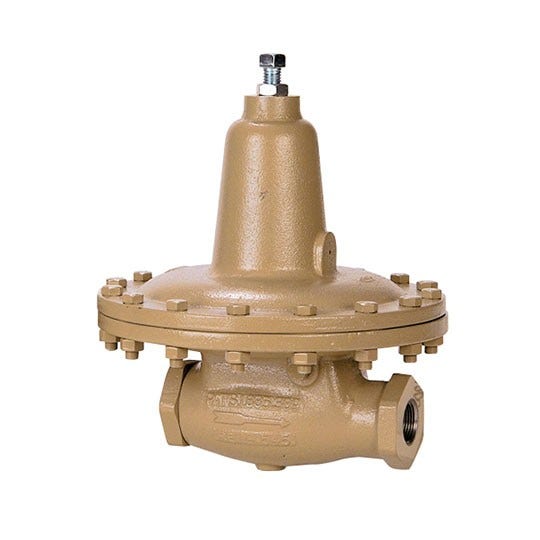Pressure reducing regulators
A “pressure reducing regulator” is a mechanical device used in various industrial and commercial applications to control and lower the pressure of gasses or fluids within a system. It operates by reducing the high-pressure inlet flow to a lower, more manageable pressure at the outlet, thus ensuring that downstream equipment or processes receive the appropriate pressure levels.
Ramén Valves offer pressure reducing regulators from Cashco. They are critical components in numerous industries, including gas distribution, oil and gas, chemical manufacturing and many others.
Pressure reducing regulators from Cashco serve several essential functions
Pressure Control
The primary function of a pressure reducing regulator is to maintain a stable and consistent outlet pressure, even when the inlet pressure fluctuates. This ensures that downstream equipment or processes operate within their specified pressure limits.
Safety
By preventing excessively high pressures from reaching downstream components, pressure reducing regulators contribute to system safety, protecting equipment and personnel from potential overpressure hazards.
Process Efficiency
Regulating pressure can enhance the efficiency of various processes, as it helps control flow rates and maintain the desired operating conditions.
Consistency
Pressure reducing regulators help achieve product consistency in manufacturing processes by ensuring that materials are delivered or processed at consistent pressure levels.
Difference between pressure reducing valves and control valves
Simply stated there is always going to be an excess of pressure available to the system that, in many cases, must be reduced to a lower pressure to be used by the system. In many applications a pressure reducing regulator can control a process better than a control valve.
So, which is better: a control valve with a pneumatic or electric actuator or a self-operated pressure regulator?
It depends on what is needed - if you want to be able to modulate the pressure according to changing process conditions, you should have a control valve where the setpoint can be changed dynamically. If the pressure is constant but the flow is variable, a pressure reducing regulator is recommended.
Control valves (link) are used in processes to regulate the flow or pressure of a fluid. The medium is controlled by adjusting the size of the flow path in the valve. Electric or pneumatic actuators are typically used to open and close control valves.
Typical sizes for pressure reducing regulators vary from ¼” up to 6.0”, however regulators above a 2.0” size become cost prohibitive when compared to a control valve. The exception is when the location is such that a control valve is not a reasonable choice.
Common applications of pressure reducing regulators for gases
Pressure reducing regulators for gases are essential components in many industrial applications. They are designed to lower the pressure of high-pressure gas sources to a safe and usable level for specific processes or equipment. Some common applications of pressure reducing regulators for gases are:
Gas distribution: Pressure regulators are used in gas distribution systems to ensure that gas is delivered at the correct pressure.
Oil and gas industry: Pressure regulators are used in the extraction, transport and refining of oil and natural gas to control the pressure and ensure the safety of these processes.
Industrial gas processing: Many industries use different gases in their processes, and pressure regulators ensure that the gases are delivered at the right pressure. This can include the use of gases such as oxygen, nitrogen, argon and hydrogen.
Common applications of pressure reducing regulators for liquids
Pressure reducing regulators for liquids are used in various industrial applications to control and lower the pressure of liquids to desired levels. They help maintain consistent pressure levels in a system, ensuring safe and efficient operation. Some common applications of pressure reducing regulators for liquids include the chemical industry, water and wastewater treatment plants, and the petrochemical industry.
Installation and maintenance of pressure regulators
Proper installation and regularly maintenance of pressure regulators are crucial for their reliability, lifespan, and safe operation. Periodically test the regulator's performance using appropriate pressure testing equipment. Always refer to the manufacturer's maintenance guidelines and recommendations for each regulator model.



